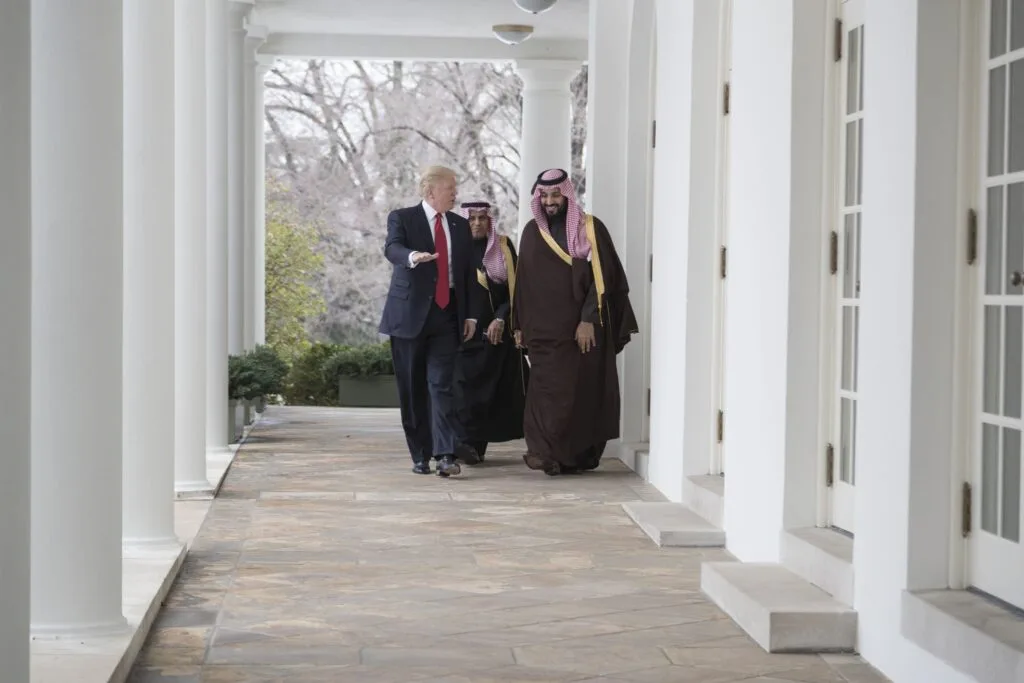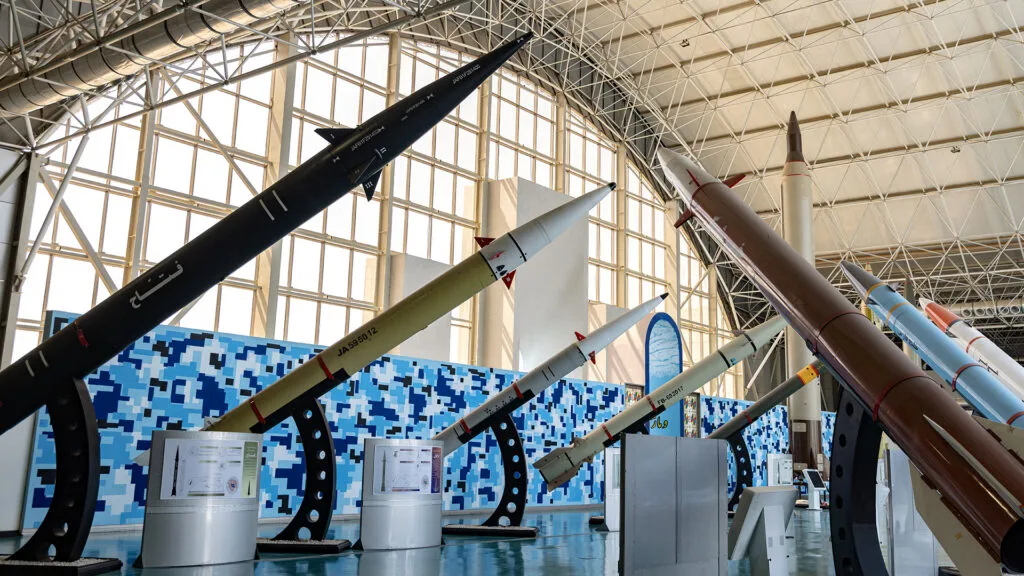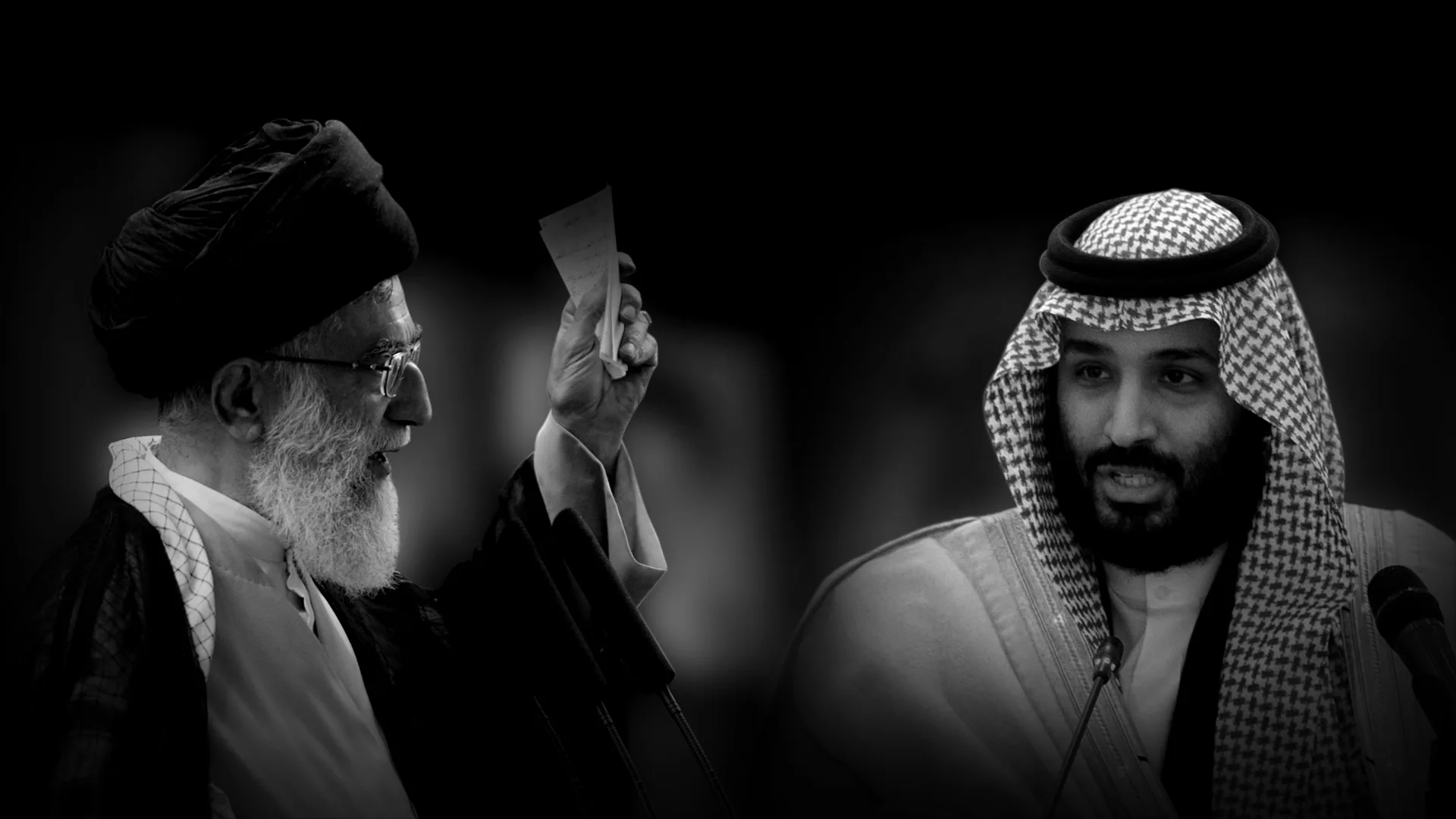Saudi Crown Prince’s U.S. Visit Comes at Critical Moment for Riyadh

March 19, 2018
Share
Saudi Arabian Crown Prince Mohammed bin Salman is scheduled to meet President Donald Trump on Tuesday, as part of a global trip to shore up relationships with key allies in the United Kingdom, Egypt and America.
This is Salman’s first visit to the United States since he was named next in line for the throne in Saudi Arabia, one of America’s most important and strategic allies in the Middle East. His meeting with President Trump at the White House comes at a critical moment for U.S.-Saudi relations: The Saudi heir will look to solidify American support as he consolidates power at home, even as he courts new allies beyond the U.S. And while American officials are committed to remaining close to the oil-rich Gulf power, a movement in Congress questioning U.S. support for Saudi Arabia’s years-long bombing campaign against neighboring Yemen has begun to gather momentum.
Still, the crown prince and President Donald Trump, who share a good rapport, remain invested in a common goal: confronting Saudi Arabia’s archrival, Iran. As FRONTLINE reported in Bitter Rivals: Iran and Saudi Arabia, the geopolitical struggle for influence between the two nations has shaped the modern Middle East and fueled many of its conflicts.
The crown prince appears unlikely to break from that tradition. On an interview that aired Sunday on “60 Minutes,” Salman compared Iran’s supreme leader to Adolf Hitler, saying that Ayatollah Ali Khamenei “wants to create his own project in the Middle East very much like Hitler, who wanted to expand at the time.”
Since appearing on the world stage in 2015, the 32-year-old prince has shaken up Saudi Arabia’s policy at home and abroad. In foreign policy, his actions have largely seemed designed to aggressively counter the rise of Iran, although he told FRONTLINE’s Martin Smith in 2017 that Iran was not worthy of Saudi Arabia’s attention “and not even number 20 on our list of concerns.”
In 2015, Saudi Arabia launched a military campaign in neighboring Yemen to fight the Houthis, a rebel movement allied with Iran, after they moved against a Saudi-allied national government. Salman — who also serves as defense minister — has been criticized for the intervention, which has created what the United Nations has called the “worst humanitarian crisis in the world.” In January, a U.N. report warned that the Saudi-led coalition was using “the threat of starvation as a bargaining tool and an instrument of war.”
The U.S. has provided the Saudi-led campaign with air-to-air refueling, intelligence and other military assistance, in addition to billions of dollars in weapons sales under both the Obama and Trump administrations.
A bipartisan movement to curtail U.S. support for the Saudi-led military intervention has been growing in Congress, with the Senate possibly voting as early as this week on a measure that would limit the military’s ability to continue aiding Saudi efforts in Yemen. But the Defense Department remains committed to the Saudi effort. On March 14, The Washington Post obtained a letter Defense Secretary Jim Mattis sent to congressional leaders, saying restricting American support “could increase civilian casualties, jeopardize cooperation with our partners on counterterrorism, and reduce our influence with the Saudis.”
“This is one of the poorest countries practically in the world, certainly the poorest in the Middle East, and it is being bombed to smithereens by the richest country, Saudi Arabia,” said Nabeel Khoury, senior fellow at the Atlantic Council’s Rafik Hariri Center for the Middle East. “Unfortunately, instead of talking about the serious humanitarian situation and how they could end the war, they’ll be talking about Yemen as a case where they can both confront Iran,” Khoury said, referring to the crown prince’s meeting with Trump.
Yemen is only the latest conflict in which the geopolitical rivalry between Saudi Arabia and Iran has played out, with recent conflicts in Iraq and Syria also finding the two powers backing opposing sides.
At home, the crown prince is working to ease the kingdom away from its dependence on oil, so Salman is likely to use this visit to attract American investment in those ambitious plans. Salman will also need to soothe jitters after hundreds of wealthy Saudis were detained in what he has billed as an anti-corruption campaign. In November, hundreds of influential businessmen and around a dozen Saudi princes were held captive in the Ritz-Carlton in Riyadh. Reportedly coerced and in some cases physically abused, they reached settlements with the kingdom to transfer more than $100 billion in private wealth to Salman’s control, according to The New York Times.
“He’s trying to overcome a rather tarnished image of Saudi Arabia” over how the situation was handled, said David Ottaway, a Middle East fellow at the Wilson Center. “He’s partly here to reassure businessmen that all is well, and ‘Don’t be afraid, we’re not going to seize your assets.’ He’s trying to re-brand Saudi Arabia in the wake of these arrests and shakedowns.”
After his meetings in Washington, D.C., Salman will spend two weeks touring American business and technology centers around the country from New York to Los Angeles, hoping to attract new investment and development in Saudi Arabia’s technology and entertainment sectors.

Related Documentaries
Latest Documentaries
Related Stories
Related Stories
Explore
Policies
Teacher Center
Funding for FRONTLINE is provided through the support of PBS viewers and by the Corporation for Public Broadcasting, with major support from Ford Foundation. Additional funding is provided the Abrams Foundation, Park Foundation, John D. and Catherine T. MacArthur Foundation, Heising-Simons Foundation, and the FRONTLINE Trust, with major support from Jon and Jo Ann Hagler on behalf of the Jon L. Hagler Foundation, and additional support from Koo and Patricia Yuen. FRONTLINE is a registered trademark of WGBH Educational Foundation. Web Site Copyright ©1995-2025 WGBH Educational Foundation. PBS is a 501(c)(3) not-for-profit organization.





















